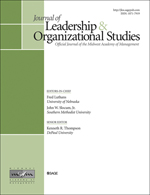How To Lead Successfully From a Distance
Editor’s Note: We’re pleased to welcome guest contributor Elizabeth Kelley, Associate Professor of Management at the School of Business Administration, Dalhousie University. Dr. Kelley and E. Kevin Kelloway of Saint Mary’s University published “Context Matters: Testing a Model of Remote Leadership” on July 24, 2012 in the Journal of Leadership & Organizational Studies. Dr. Kelley kindly provided these insights—including four strategies for remote managers to increase their chances of being successful transformational leaders.
***
As an undergraduate student, I read the short story called “The Machine Stops” by E.M.Forster and found it a chilling prophecy of the world we see today. I have always been passionately convinced that there really is no substitute for face-to-face communication, the essence of humanity, but increasingly, people are working at a distance from their managers and their workmates. Therefore, I was motivated to investigate whether and how this would affect the leadership process.
 My findings confirmed what most people would suspect—that there IS a significant difference between face-to-face and technologically mediated leadership. Much of that difference appears to reside in the serendipitous nature of much of leader-member communication. I was somewhat surprised to find that collocated leaders and followers, who see each other face-to-face, have higher levels of electronic communication than do remote leaders and followers. Intuitively, one would expect to find the opposite. This phenomenon itself bears further investigation. The importance of prior knowledge of the remote manager, even by reputation, was somewhat surprising, and suggests that trust is a pivotal concept in this context.
My findings confirmed what most people would suspect—that there IS a significant difference between face-to-face and technologically mediated leadership. Much of that difference appears to reside in the serendipitous nature of much of leader-member communication. I was somewhat surprised to find that collocated leaders and followers, who see each other face-to-face, have higher levels of electronic communication than do remote leaders and followers. Intuitively, one would expect to find the opposite. This phenomenon itself bears further investigation. The importance of prior knowledge of the remote manager, even by reputation, was somewhat surprising, and suggests that trust is a pivotal concept in this context.
 Encouragingly, the positive outcomes typically associated with transformational leadership style itself occurred regardless of whether the context was proximal or the remote environment—as long as the leader worked to make that style perceivable to remote reports. The most effective method for doing this appeared to be by simulating face-to-face communication patterns; for example, by establishing regular frequent times to communicate and adhering to that schedule (building trust in the process), and by manufacturing opportunities for “serendipitous” communication, by just phoning or emailing to “check in.” I think of this as “planning for UNplanned communication”!
Encouragingly, the positive outcomes typically associated with transformational leadership style itself occurred regardless of whether the context was proximal or the remote environment—as long as the leader worked to make that style perceivable to remote reports. The most effective method for doing this appeared to be by simulating face-to-face communication patterns; for example, by establishing regular frequent times to communicate and adhering to that schedule (building trust in the process), and by manufacturing opportunities for “serendipitous” communication, by just phoning or emailing to “check in.” I think of this as “planning for UNplanned communication”!
This study is an early stage in understanding remote leadership. There are emerging technologies and differing generational ways of communicating that complicate the picture and will require further study. However, at this point, individuals who do not often see those who report to them can increase their chances of being a successful transformational leader by:
- Communicating at both planned and unplanned times;
- Increasing trust by at least one face-to-face interaction, preferably early in the relationship;
- Ensuring transparency in their decisions, so that direct reports are aware of organizational drivers;
- And demonstrating to those remote followers that they are trusted.
What I will do differently is to measure “remoteness” differently. While collocation was a useful and objective measure for this research, using a more precise measure of the amount of face-to-face contact would be beneficial in refining relationships in this context.













![Share Your Most Surprising Policy Citation for Chance to Win $500 [Closed] Share Your Most Surprising Policy Citation for Chance to Win $500 [Closed]](https://www.socialsciencespace.com/wp-content/themes/conferpress/images/default_thumbnail-new-border.jpg)
























































































Those who are working remotely could be left for their own devices. lacking two essential ingredients for achieving superior productivity; the one which is considered highly important is the social contact. where interaction with fellow members of the organization will enhance commitments to organizational goals. being a member of a real team is more motivating than a virtual team. it also facilitates learning from other team member’s experience on a daily and hourly basis. we can safely assume that personal development is accelerated for those who work directly with their team more than those who are working remotely. As for… Read more »
This sounds like an interesting study. I am currently conducting some ethnographic work in an organisation where remote work is the norm and have had some interesting discussions with the senior manager as to how he maintains a “connection” with his remote co-workers. An important aspect of this organisation is their values-led nature. Of late I have been discussing with this senior manager how he maintains the values of the organisation and facilitates and encourages these particular values to “live” in the work his remote co-workers accomplish. Technology, as you have noted, plays a role in the relationships this senior… Read more »